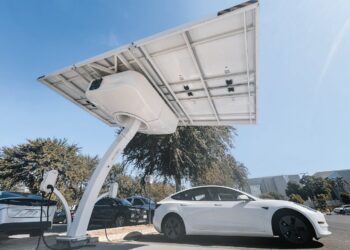Home energy storage products
- Concept of home energy storage system: The core of a home energy storage system, also known as a battery energy storage system, is a rechargeable storage battery, usually based on lithium-ion or lead-acid batteries, controlled by computers, and coordinated by other intelligent hardware and software to achieve charging and discharging cycles. It can be combined with distributed photovoltaic power generation to form a home optical storage system you can use lifepo4-energy.
- The core hardware equipment of the home energy storage system includes a battery and converter. According to the degree of product integration, there are mainly two modes: all-in-one machine and split machine. (1) Split machine. Some AC coupling products and DC coupling products adopt the split machine mode. Battery system and inverter system are provided by the pack manufacturer and inverter manufacturer respectively, and then reach end users through integrators, distributors, and installers. (2) All-in-one machine, the product is an all-in-one system including batteries and inverters, usually AC-coupled products. The upstream battery system and inverter supply products as suppliers, usually adopt the brand mode, the final product does not show the supplier’s brand, and product sales and after-sales are all borne by the brand. Three types of enterprises in the industrial chain: brand (integrator), inverter manufacturers, cell manufacturers.
- According to the voltage of the battery pack, it can be divided into high-voltage batteries and low-voltage batteries. The industry shows a trend of conversion to high-voltage batteries. The main purpose is to improve efficiency and simplify system design, but at the same time, it requires higher cell consistency and BMS management ability. High voltage battery The battery pack voltage is more than 48V, multiple cells are connected in series, and the current is small. The hybrid inverter system has simpler topology design, smaller size, and lighter weight.
- Cost composition of overseas household photovoltaic energy storage system: photovoltaic module 17%, photovoltaic inverter 15%, energy storage system 35%, other auxiliary materials 18%, installation fee 15%. (Take a 4.68kw photovoltaic + Vote 5.8kwh/6kw energy storage system in a UK household as an example, with a total investment of about 10,000 pounds).
5. Various development trends of home photovoltaic energy storage: (1) From the battery trend, energy storage batteries are evolving towards higher capacity. (2) From the inverter trend, the demand for hybrid inverters suitable for incremental markets and off-grid inverters that do not need to be connected to the power grid increases. (3) From the trend of terminal products, currently split, that is, battery and inverter system is used together, and gradually develop to all-in-one. (4) From the perspective of regional market trends, differences in a power grid structure and power market lead to slight differences in mainstream products in different regions. Europe mainly adopts grid-connected mode, the United States has more grid-offline mode, and Australia is exploring virtual power plant mode and more information click here.







